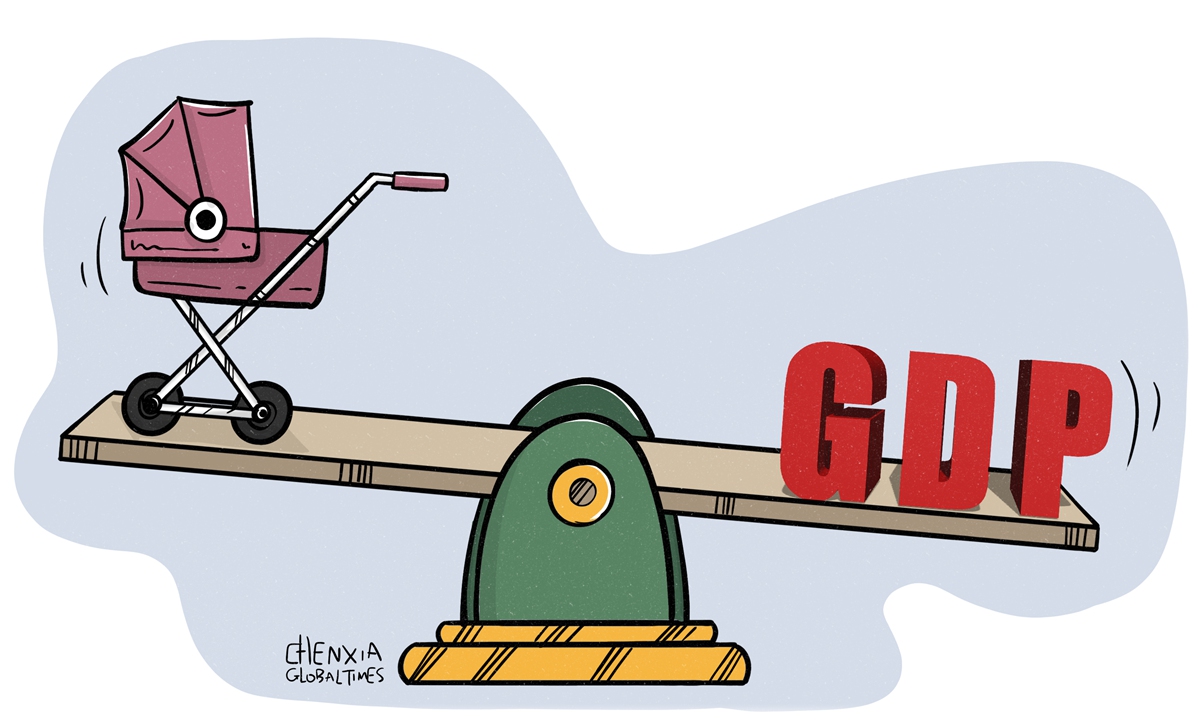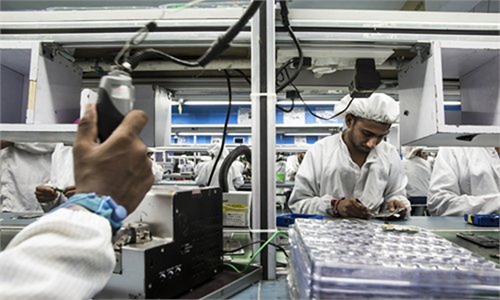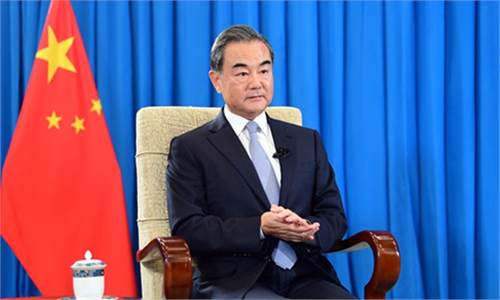
Illustration: Chen Xia/Global Times
India is projected to surpass China as the world's most populous country next year, the Press Trust of India (PTI) news agency reported on Monday, citing a report by the UN.In 2019, the UN estimated in its population report that India will overtake China as the world's most populous country by 2027. On the back of a booming population expansion, India is likely to win the crown four years ahead of previous forecasts. Things are moving faster than many have though.
China's demographic dividends fuelled its economic boom and, in theory, India's population expansion should also help propel its growth. Some observers pay close attention to whether India will surpass China because they see the replacement as a prelude for India to take on China's mantle as the factory of the world. They hope India can overtake China's population, and the main reason is their geopolitical competition mindset, although geopolitical thinking is always divorced from reality of the industrial chains.
Booming population expansion will also place pressure on India's labor market, with millions of Indians entering the job market every year. India's overall unemployment rate rose to 7.80 percent in June, from 7.12 percent in May, NDTV reported on July 5, citing data from the Centre for Monitoring Indian Economy's (CMIE). India faces youth unemployment as a major challenge for labor market policy. The economy needs to create jobs for unemployed young people, otherwise high unemployment rate among young people will become a destabilizing factor in the country.
The manufacturing sector absorbs a large number of young workers and places them into decent paying jobs. This is why it's important for India to boost its manufacturing sector. Once India surpasses China as the world's most populous nation, the pressing task for the moment will be to ramp up the country's manufacturing capacity to digest its "demographic dividend."
In fact, the demographic dividend and huge market potential have long been the advantages of the Indian economy, but over the years, India has been unable to solve the problem of how to make full use of these advantages. The reasons are the inherent structural problems and protectionist tendencies in its economy.
Unlike many major economies, India has skipped the process of developing a solid manufacturing base, and arrived directly at developing its tertiary industry. Although India has great advantages in software outsourcing and pharmaceuticals, its manufacturing sector is relatively underdeveloped. In fiscal year 2020, manufacturing constituted 17.4 percent of India's GDP, 10 percent lower than China's 2021 data.
Since taking office, Modi's economic reforms have targeted the manufacturing sector and put forward an ambitious plan to boost the manufacturing sector. The "Make in India" campaign gives more emphasis on support for the manufacturing, aiming to increase the contribution of manufacturing in India's GDP from 15 percent to 25 percent, and build India into a global manufacturing center.
Years have passed, however, the country has still a long way to go to make itself a manufacturing hub.
Since the outbreak of the COVID-19, India has regarded this as an opportunity to attract the industrial chain to be transferred from China. However, it is not a smooth process. The main reasons are the backward infrastructure construction, incomplete product supply chain, low education level of the working population, and, most importantly, protectionism. For instance, India's unpredictable and overcomplicated foreign investment approval system has become an obstacle to attract manufacturing investment from China.
While India's population growth brings greater advantages to its economy, if India chooses to reduce protectionism and actively integrate into regional industrial and value chains, India will attract more foreign investment, fully promote the development of the manufacturing industry, and turn the population advantage into economic progress.
The author is a reporter with the Global Times. bizopinion@globaltimes.com.cn



